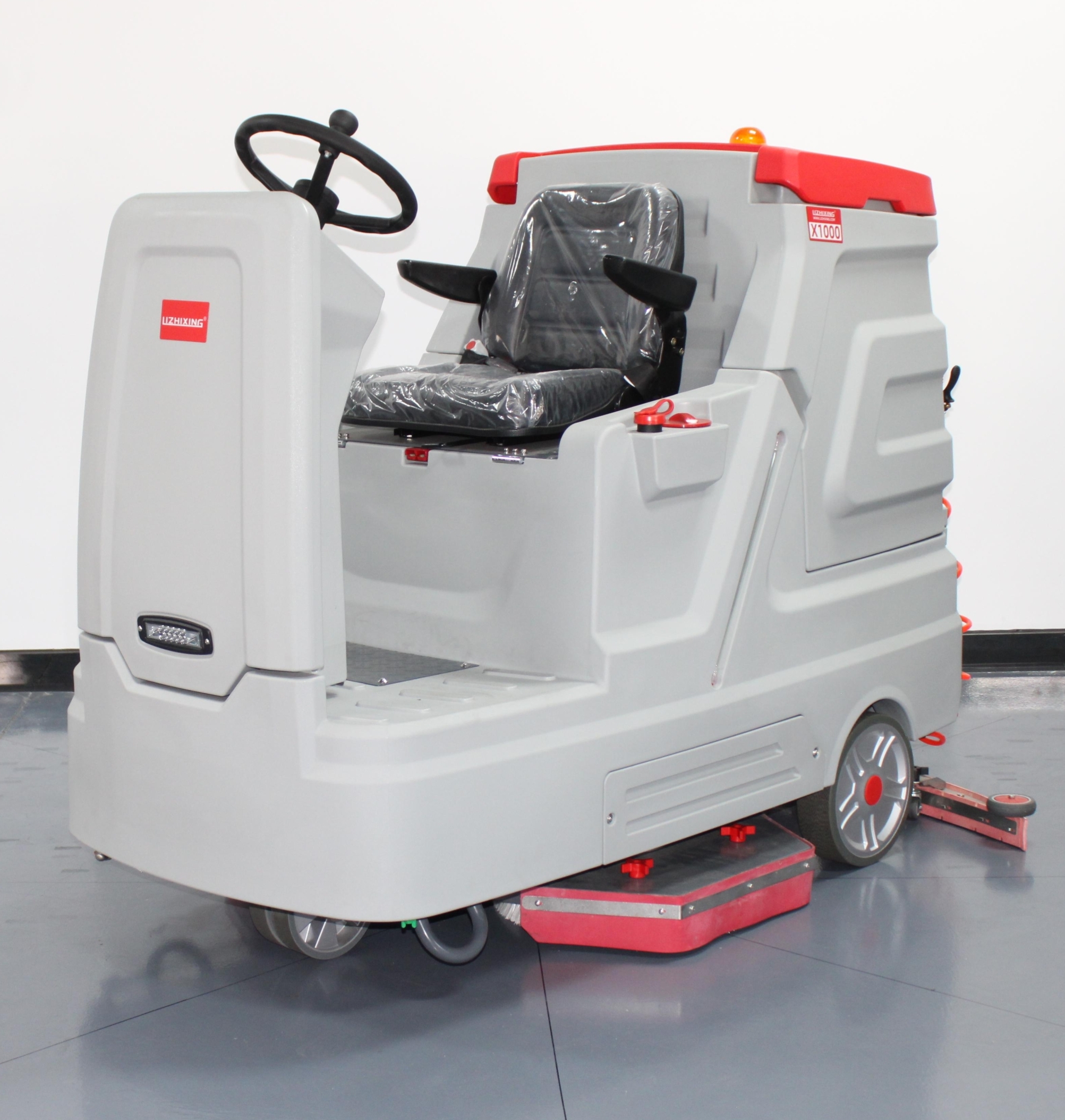I. Introduction
The cleaning equipment market has been evolving steadily over the years, adapting to changing consumer demands, technological advancements, and environmental concerns. As we look ahead, several key trends are expected to shape the future of this market, revolutionizing the way we clean and maintain our living and working spaces.

II. Technological Advancements
A. Automation and Robotics
One of the most significant trends in the future of the cleaning equipment market is the increasing adoption of automation and robotics. Robotic vacuum cleaners, floor scrubbers, and window cleaners are already making their way into homes and commercial spaces. These devices are equipped with advanced sensors and artificial intelligence algorithms that allow them to navigate around obstacles, map out cleaning areas, and even adjust their cleaning intensity based on the level of dirt and debris. In the coming years, we can expect to see more sophisticated robotic cleaning equipment that can perform a wider range of tasks, such as deep cleaning carpets, sanitizing surfaces, and even cleaning hard-to-reach areas. This not only improves cleaning efficiency but also reduces the need for manual labor, making it an attractive option for both residential and commercial users.
B. Internet of Things (IoT) Integration
The integration of IoT technology in cleaning equipment is another trend that is set to transform the market. IoT-enabled cleaning devices can be connected to a network, allowing users to control and monitor them remotely through a smartphone app or other smart home devices. For example, users can schedule cleaning tasks, adjust cleaning settings, and receive real-time notifications about the device’s status, such as battery level, cleaning progress, and maintenance needs. Additionally, IoT integration enables cleaning equipment to collect data on cleaning patterns, usage frequency, and environmental conditions, which can be analyzed to optimize cleaning performance and improve energy efficiency. This data-driven approach also allows manufacturers to develop more personalized cleaning solutions tailored to the specific needs of individual users.
C. Advanced Cleaning Technologies
Innovative cleaning technologies are constantly emerging, offering more effective and efficient ways to clean various surfaces and materials. For instance, ultraviolet (UV) light technology is being increasingly used in cleaning equipment to kill bacteria, viruses, and other microorganisms. UV light can penetrate the cell walls of these pathogens, destroying their DNA and rendering them harmless. This makes UV-equipped cleaning devices an excellent choice for sanitizing surfaces in healthcare facilities, kitchens, and other areas where hygiene is of utmost importance. Another advanced cleaning technology is steam cleaning, which uses high-temperature steam to remove dirt, stains, and grime from surfaces. Steam cleaning is not only effective but also eco-friendly, as it requires little to no chemical cleaners. In the future, we can expect to see further advancements in these and other cleaning technologies, such as ultrasonic cleaning, electrostatic cleaning, and dry ice cleaning, each offering unique advantages for different cleaning applications.
III. Changing Consumer Demands
A. Health and Hygiene Consciousness
In recent years, there has been a growing awareness of the importance of health and hygiene, especially in the wake of global health crises such as the COVID-19 pandemic. Consumers are now more concerned than ever about the cleanliness and sanitization of their living and working environments. This has led to an increased demand for cleaning equipment that can effectively remove germs, bacteria, and viruses from surfaces. As a result, manufacturers are developing cleaning devices with enhanced sanitization features, such as UV light, HEPA filters, and antimicrobial coatings. Additionally, consumers are also looking for cleaning equipment that is easy to clean and maintain, as well as those that can be used safely around children and pets.
B. Sustainability and Environmental Friendliness
Another major trend in the cleaning equipment market is the shift towards sustainability and environmental friendliness. Consumers are becoming more aware of the impact of traditional cleaning products and equipment on the environment and are seeking more eco-friendly alternatives. This has led to the development of cleaning equipment that uses less water, energy, and chemical cleaners. For example, there are now water-saving vacuum cleaners, energy-efficient floor scrubbers, and biodegradable cleaning solutions available on the market. In addition, manufacturers are also focusing on using recycled materials in the production of their cleaning equipment and packaging, reducing waste and minimizing their carbon footprint. As environmental concerns continue to grow, the demand for sustainable cleaning equipment is expected to increase significantly in the future.
C. Convenience and Mobility
In today’s fast-paced world, consumers value convenience and mobility more than ever. They want cleaning equipment that is easy to use, store, and transport. This has led to the development of compact, lightweight, and portable cleaning devices, such as handheld vacuum cleaners, cordless stick vacuums, and portable steam cleaners. These devices are not only convenient for quick clean-ups but also suitable for use in small spaces or when on the go. Additionally, many modern cleaning equipment comes with features such as long battery life, quick charging, and easy-to-empty dust bins, further enhancing their convenience and user-friendliness.
IV. Market Expansion and Globalization
A. Growth in Emerging Markets
The cleaning equipment market is expected to experience significant growth in emerging markets, such as Asia-Pacific, Latin America, and the Middle East. These regions are witnessing rapid urbanization, increasing disposable incomes, and a growing awareness of the importance of cleanliness and hygiene. As a result, the demand for cleaning equipment, both in the residential and commercial sectors, is on the rise. In addition, the expansion of the hospitality, healthcare, and food and beverage industries in these regions is also driving the demand for specialized cleaning equipment. Manufacturers are now focusing on developing products that are tailored to the specific needs and preferences of consumers in these emerging markets, taking into account factors such as local cleaning habits, cultural differences, and affordability.
B. E-commerce and Online Sales
The rise of e-commerce has had a profound impact on the cleaning equipment market, providing consumers with a convenient and accessible way to purchase cleaning products and equipment. Online platforms offer a wide range of options, competitive prices, and detailed product information, making it easier for consumers to compare and choose the right cleaning equipment for their needs. In addition, e-commerce also allows manufacturers and retailers to reach a wider customer base, expand their market reach, and reduce their marketing and distribution costs. As more consumers turn to online shopping, the e-commerce segment of the cleaning equipment market is expected to continue to grow in the future.
C. Mergers, Acquisitions, and Strategic Alliances
In an effort to gain a competitive edge in the global cleaning equipment market, companies are increasingly engaging in mergers, acquisitions, and strategic alliances. These partnerships allow companies to combine their resources, expertise, and technologies, enabling them to develop and market more innovative and comprehensive cleaning solutions. For example, a company specializing in robotic cleaning technology may acquire a company with expertise in IoT integration to create a more advanced and connected cleaning product. Similarly, two companies may form a strategic alliance to expand their market reach in a particular region or to target a specific customer segment. These mergers, acquisitions, and strategic alliances are expected to reshape the competitive landscape of the cleaning equipment market in the coming years.
V. Conclusion
The future of the cleaning equipment market is filled with exciting opportunities and challenges. Technological advancements, changing consumer demands, and market expansion are all driving forces that will shape the development of this market in the coming years. As automation, IoT integration, and advanced cleaning technologies continue to evolve, we can expect to see more efficient, effective, and eco-friendly cleaning equipment on the market. At the same time, manufacturers will need to adapt to the changing needs and preferences of consumers, particularly in terms of health and hygiene, sustainability, and convenience. By embracing these trends and staying ahead of the competition, companies in the cleaning equipment market can position themselves for long-term success in this dynamic and growing industry.
 Tanjie pulito
Tanjie pulito


